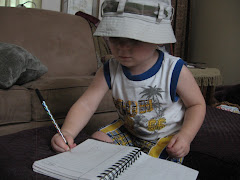1. Franco, Betsy (ed.). Falling Hard: 100 Love Poems by Teenagers. Cambridge, Massachusetts: Candlewick Press, 2008.
2. Overview. Poems collected by Betsy Franco from teenagers - both male and female - populate the pages of this collection. Falling between the ages of 13 though 18, these poems cover the many moods of love, from funny to solemn, from lighthearted to deadly serious, from playful to heart broken.
3. Critical Analysis. This volume of poetry surprised me. Perhaps because I'm older, when I think of "love poem" I think of descriptive words like sweet, happy, even suggestive. But these poems express lots of raw emotion, and they don't just hint about sex. The language is explicit in many of them; apparently they portray what teenagers are thinking about when they think "love poem." VOYA stated it nicely in their review: "its pages reveal tortured, timeless poetry, yearning hearts, broken spirits, and emotions on overload. Brutally honest, achingly tender, these glimpses of love through poetry are erotic, sibilant, and sexy." My how times have changed in the last two generations.
From a poetic standpoint, the poems are varied in style. Some rhyme, while some don't. Some have a rhythm, while some don't. Some have obvious meaning, while some don't. If teachers and librarians are interested in a book of poetry that will appeal to both boys and girls, this could be the one. However, it should be recommended with caution. This could be one of those books that brings backlash in a conservative community, so school staff need to be prepared to answer questions about its inclusion on a library shelf or suggested reading list. This one could bring out the censors.
A review from Booklist says it this way: "The teen poets in this lively anthology knock greeting-card clichés even as they celebrate their romance and their passion . . . . Some of the simplest lines say the most: “I want you less than I thought I did. / And I love you more than I ever knew.” From the pain of breakup and denial to affection and desire, the feelings in these poems will ring true to gay and straight teens alike."
Many poems show sophistication using techniques such as allusions to literature - "I am Poe's Lenore . . . Fitzgerald's Zelda . . . Homer's Muse"; or entertainment - "I enjoyed the confusion in your eyes / At my Monroe-meets-Hepburn dress"; or art - "Like a van Gogh in a museum, / It's look but don't / Touch." Parallel structure strikes a chord in lines like "It was good / then it wasn't / He was nice / then he wasn't / I was okay / then I wasn't / We both loved / then we didn't."
Betsy Franco is a noted author who at the time Falling Hard was released, had published more than 80 books, including three previous anthologies. I do not doubt that this volume would be a hit with teenagers while some of the adults in their lives may not be quite so enthusiastic.
GUEST POST: Chris Baron on SPARK
6 months ago




